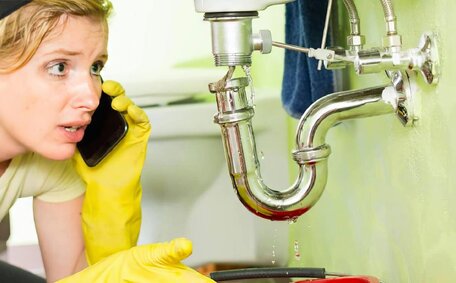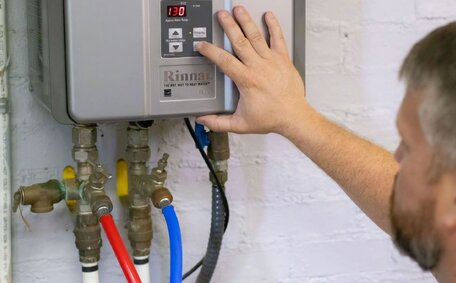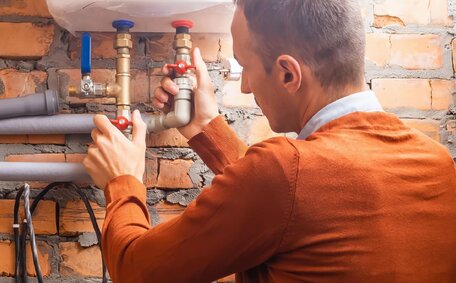Introduction to Natural Gas and Propane
Natural gas and propane are common fuel sources used for heating, cooking, and other household needs. Ashfield Plumbing specialises in installing and maintaining systems that use these gas fuels, leveraging our expertise in plumbing services within the Ashfield area.
Natural gas and propane are known as clean-burning energy sources, each with its own set of benefits. However, there are significant differences between propane and natural gas in aspects like composition, efficiency, cost, environmental friendliness, storage and delivery methods, and safety considerations.
This article provides an in-depth comparison of propane and natural gas, helping households in the Sydney metro area make an informed choice about the right system for their home.
Chemical Composition
Natural gas mainly consists of methane, which makes up about 70-90% of its composition. It also contains lesser amounts of other hydrocarbons like propane, butane, and ethane. On average, one cubic foot of natural gas contains approximately 1,030 British thermal units (BTU).
Conversely, propane is also referred to as LPG (liquefied petroleum gas), distinct from LNG, which is liquefied natural gas.
Propane, sourced from natural gas processing or crude oil refining, consists solely of propane and butane compounds, which are separated and liquefied similarly to the production of LNG. One cubic foot of propane gas contains an energy content of around 2,500 BTU when expanded, over twice that of natural gas.
This means that propane packs a higher energy punch in less volume compared to natural gas. However, natural gas pipelines allow easy access for household supply in many urban regions. Propane requires storage in pressurised tanks and is delivered by truck for onsite maintenance, showcasing the distinct storage and delivery needs of each fuel.
Energy Efficiency
When comparing the energy efficiency between natural gas propane, it is useful to examine the energy output per volume of each fuel type. As mentioned, one cubic foot of natural gas contains around 1,030 BTU, while an equivalent volume of propane gas provides about 2,500 BTU, which is much higher.
This indicates that propane offers more than double the energy of natural gas per cubic foot. So for applications like household cooking and heating, propane can be more efficient, over twice as much in terms of utilising storage tank volume and fuel consumed.
However, factors like burner and appliance efficiency also impact real-world energy usage. Contemporary appliances that use natural gas can achieve efficiency levels akin to those using propane. Additionally, the extensive availability of natural gas pipelines offers convenience for numerous households.
In areas reliant on propane delivery, the additional transportation costs could negate its efficiency benefits. Energy costs per BTU for natural gas are often lower due to established infrastructure. So both fuels have efficiency merits depending on the specifics of supply and application.
Cost Comparison
Natural gas is typically the more affordable option, with propane prices subject to more significant market fluctuations. Natural gas prices tend to be lower, averaging $15-25 per thousand cubic meters for household use. Propane prices usually fluctuate between $2-4 per gallon, often experiencing greater variability than natural gas.
The extensive natural gas delivery infrastructure also helps minimise supply costs in many regions. Households connected to natural gas lines generally pay for the gas and a monthly service fee. Conversely, propane systems may entail costs for tanks, possible rental fees, and delivery expenses.
However, Propane holds advantages in certain circumstances. Off-grid households without natural gas line access face no infrastructure costs for propane. The higher energy density of propane can also offset its base fuel cost through improved efficiency and lower overall consumption.
Cost comparisons should factor in regional energy rates, delivery methods, tank fees, and the efficiency of appliances. Weigh up these variables to determine the most cost-effective option for heating, cooking, and other household needs.
Storage and Delivery
Natural gas is supplied via an extensive pipeline network that runs underground directly into homes and businesses. This method smoothly fuels your home and can fuel your other applications with a continuous supply, negating the need for refuelling or onsite storage tanks.
In contrast, propane is stored onsite in pressurised tanks that must be refilled periodically. Typical residential propane tanks range from 250-500 gallons, equating to several thousand cubic feet of gas, and require refilling every 1-2 months for average use. Larger 1000+ gallon tanks may only need annual refilling.
Propane suppliers dispatch tank refills upon request. Natural disasters or storms can interrupt propane deliveries, while the pipeline-supplied natural gas is usually uninterrupted. Having sufficient propane storage capacity onsite helps mitigate this risk.
The pipeline network for natural gas also reaches more customers across urban areas. Yet, propane is advantageous for rural homes that lack natural gas infrastructure. Portable propane tanks offer ready access to fuel without requiring new utility infrastructure.
Safety
Safety is a crucial concern when dealing with any kind of fuel gas in the home. Both natural gas and propane can pose explosion and toxicity risks if mishandled. Nevertheless, natural gas and propane leaks behave differently due to their physical properties.
As natural gas is lighter than air, it will rise and disperse in the event of a leak. In contrast, propane vapour is heavier than air. Propane leaks, however, collect in lower areas, posing a higher risk of fire and explosion.
Proper installation and upkeep of natural gas and propane systems are crucial for reducing leak risks. It’s also essential that appliances are used appropriately, ensuring adequate ventilation for combustion gases.
We recommend gas detectors for both fuels – close to propane storage areas and where natural gas appliances are located. These will audibly alert occupants to potentially hazardous leaks. Annual inspections also help confirm systems are leak-tight.
By following safety precautions and using qualified technicians for installation and repairs, both natural gas and propane can serve as practical fuel options. But their differing properties require differing approaches to ensure household welfare.
Environmental Impact
Both natural gas propane burn cleaner than coal and oil, producing lower emissions of greenhouse gases like carbon dioxide. While nonrenewable, natural gas mainly consists of methane, a potent greenhouse gas more effective than CO2 at trapping heat if released into the atmosphere.
The pipelines that transport natural gas may also be prone to methane leaks over time. Recent studies estimate over 2% of all natural gas in the supply chain escapes as fugitive methane emissions. Although the combustion of both propane and natural gas is relatively clean, any leakage can diminish these environmental benefits.
In comparison, propane has a lower greenhouse impact when considering full lifecycle emissions from production to combustion. Propane, managed in closed systems from production to consumption, has minimal leakage rates. For eco-conscious households, propane offers advantages as the lower-emissions option.
However, the widespread pipeline infrastructure and availability of natural gas gives it practical appeal. Opting for the most energy efficient appliances, where natural gas used can help mitigate methane leakage impacts. Regular maintenance checks also ensure leaks are addressed promptly.
Applications for Home Use
Both natural gas and propane have versatile domestic applications for climate control, cooking, and powering various home appliances.
Natural gas furnaces and boilers are common for central heating and water heating in areas with access to pipeline infrastructure. But propane units can suit rural households beyond utility access. Dual-fuel heat pump systems with integrated propane heating offer energy efficiency merits too.
In kitchens, compressed natural gas cng stoves are commonplace, provided by house gas lines. Natural gas barbeques prevail in urban areas, but propanes portability allows grilling anywhere.
Freestanding propane stoves are also available. And portable propane burners enable outdoor cooking.
Propane can also power generators for backup electricity needs and fuel appliances like fire pits, mosquito deterrents, and floor cleaners. Natural gas dryers are typically less expensive, while ventless propane dryers are costlier but beneficial where ventilation is limited.
So while natural gas is tailored for domestic heating cooking with widespread infrastructure integration, propane’s off-grid versatility holds equal merit for many homeowners. The choice can make a difference depending on factors such as location, costs, targeted appliance types, and lifestyle needs.






